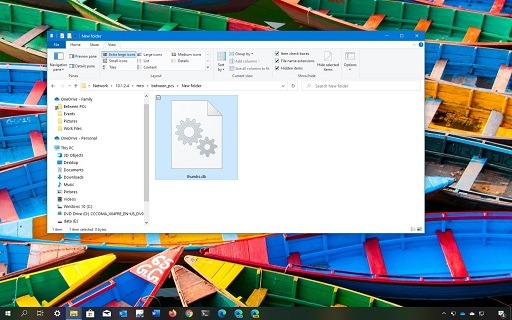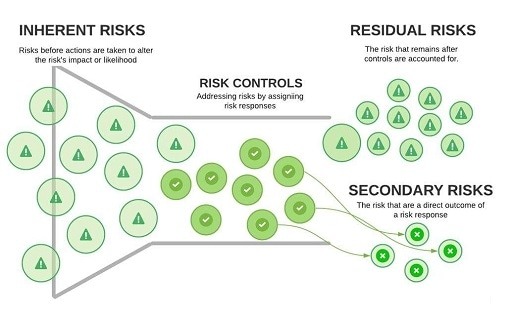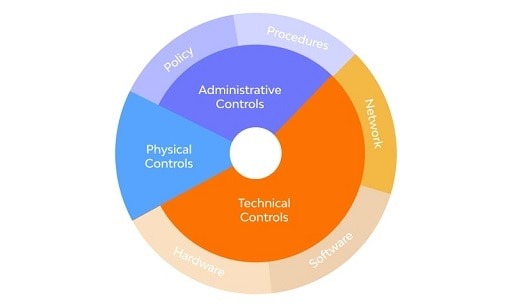How to open Thumbs.db files and delete them: Because of the passage of time and the fact that we make extensive use of our devices that run Windows, we have amassed a great number of our own files across the various disk drives of the computer.
To do all of this, we need to add the components that correspond to the operating system itself or to the applications that we have installed on our computer. Now that we’ve gotten that out of the way, let’s discuss the file that’s been given the name Thumbs.db and find out what it contains.
When we are preparing to delete items to make more room on the drives so that we can use them for other purposes, we need to exercise extreme caution. It is possible that we will delete a folder or file that is associated with particular programs or Windows itself, thereby causing damage to the software.
This has the potential to become a significant nuisance, and it also poses the risk of causing damage to the contents of our equipment and, as a result, its functionality.
Because of this, it is generally best to clean our own files, either by deleting them or by making changes to the unit they are stored in. You can probably imagine that the importance of all of the files that are associated with the photographs and videos that we have been amassing is particularly high in this context.
In general, all of these different kinds of multimedia content take up a significant amount of room on hard drives. If we don’t want to get rid of all of this information permanently, an excellent solution would be to save a significant portion of it on external storage units, specifically the items that we don’t use very often.
However, in this section, we want to zero in on a file that is relatively typical within the photo folders that we have been building up over time. And that would be the file that goes by the name Thumbs.db; I’m sure that a good number of you find it extremely familiar, or at the very least that you have encountered it on multiple occasions.

What is Thumbs.db, and why do I see it so often on Windows?
In addition, those of you who routinely work with a significant number of photographs stored in your Windows computer’s files are probably already accustomed to locating the relevant files. Because of all of this, we are going to have a conversation about the nature of this file and the options we have for working with it.
The Thumbs.db file is a file that is automatically created by the Windows operating system for its own internal use. This is the first thing that we should be aware of at this point in time.
In point of fact, this is the one that stores the thumbnails of the images that correspond to those that we have stored in a folder over the course of time. As a consequence of this, it appears in a number of different places across the disk as we navigate it.
This file is used to speed up the loading of these thumbnails whenever the folder in question is opened, which should give you an idea of the utility that it provides. This means that the loading time for all of the thumbnails of the photos that have been saved here will be significantly reduced whenever we access it, for instance when using the Windows File Explorer.
In a nutshell, this indicates that we should not, as a matter of principle, delete the file that is created automatically by the operating system.
This is something that becomes especially obvious whenever we access that folder that houses a significant number of photographic files, which we do quite frequently. Because of this, thanks to Thumbs.db, we will be able to view the thumbnails of their files on the screen in a manner that is much more fluid, and even instantaneous.
You may also like: Database Management: Some Critical Dos Don’ts of Data Archiving
System file malfunction
At this point, it is important to point out that even if we delete it, whether on purpose or inadvertently, nothing significant will actually occur as a result of our actions. On the other hand, as we discussed earlier, it is preferable to keep the file in its current location if we frequently open and use the folder containing photos.
In the same vein, we need to take into account the fact that the Microsoft operating system has a usage error in this particular instance. This is due to the fact that the file that we are discussing right now also contains the thumbnails of images that have been removed in the past. The reason for this is explained by the following:
This indicates that the file we are discussing, known as Thumbs.db, is the repository for all of the thumbnails of the images that have been saved in the aforementioned folder. Even if we delete them in the past, the thumbnails corresponding to those contents that no longer exist are still saved in this system file.
This is the case even if we delete them. When it comes to the information contained within images that have been saved to our hard drives, this potential vulnerability in Windows’ security could be considered to be of the highest priority.
The primary driver behind all of this is very plain to see. If, at the time, we had photographic files saved in that somewhat sensitive or personal folder, the thumbnail for each of those images would still be stored in this file that we are discussing at the moment.
This means that anyone who has access to it and is able to open it will be able to see a smaller version of those personal photos that we would not want to show to anyone else who could potentially open it.
The reason for this is that the corresponding entries are recorded, even if we have removed them from the computer. This is the reason why this is the case. Because of all of this, we are going to discuss the various ways in which you can examine the contents of the file that is located below.
How to open Thumbs.db thumbnail file
In the scenario that we are discussing, it is possible that there will be times when we are interested in taking a look at the content of that file to determine whether or not it contains thumbnails that we do not want to be present there.
In addition, if we encounter any difficulties while trying to view the contents that we are commenting on, we have the option of erasing all of these files that Windows has produced simultaneously in order to double check everything.
You may also like: Online Database Applications for Enterprises – Reviewing Some Standard Use Cases
Use the File Magic program
To begin, we are going to discuss a helpful program that is geared toward providing us with all of the facilities necessary to view the contents of the vast majority of file formats. To be more specific, it is a piece of software known as File Magic.
It is important to emphasize the fact that this is a functional program for the vast majority of the file formats that are in use today. Therefore, this is compatible with the Thumbs.db extension.
When it comes to opening these photo thumbnail files, it is important to be aware that this software will not always function properly and will not be effective one hundred percent of the time.
It is interesting to learn that thanks to the user interface that it provides, even users who do not have a great deal of experience with these types of tasks are able to use it.
Open Thumbs.db with a Linux distro
Any Linux distribution is an option for us to utilize in the event that the results obtained with the program that we have discussed in the past do not meet our expectations. Because this is an open-source operating system, we have the ability to download and run a program that will be of great assistance to us in viewing the contents of the Thumbs.db file.
This is one of the many benefits of using this type of system. To provide you with a better approximation of what happens, let’s say that the software in question decompresses the thumbnails that have been saved in the file so that you can view them on the screen.
This will be an excellent opportunity to take a look at the file for ourselves and determine whether or not it contains thumbnails of remnants of images that we have already deleted and do not want to remain there.
Vinetto is the name of the application that runs on Linux that we are discussing in this context. For instance, once we have opened the system terminal in any of those distributions that are based on Debian, we will enter the following command:
apt-get install vinetto
What we have accomplished by doing this is installing the program in its entirety into the operating system. After that, all that is required of us is to navigate to the directory in which the Thumbs.db file that we had previously extracted from our Windows computer and stored in this location is located.
After we have navigated to that folder, we will need to run the following command:
vinetto Thumbs.db -o/
At that point, the thumbnails contained within the specified Thumbs.db file will be extracted and displayed on the screen for us to examine in greater detail. This will allow us to view the thumbnails in their entirety.
You may also like: Stellar SQL Database Repair Tool for MS SQL
Get rid of all Thumbs.db files all at once
In a similar vein, it’s possible that we do not want to compromise our safety or our privacy by exposing others to these thumbnails of the photos. There is a simple solution for the scenario in which we have multiple folders that contain or have contained photographic files of various kinds and we do not want those files to remain in those folders.
Simply downloading and setting up a program known as Thumbnail Database Cleaner is all that is required to accomplish everything that we have described to you. After the drives of the Windows computer have been scanned, this will immediately be responsible for deleting all of the files that we have been discussing in these lines automatically.
Would you like to read more about How to open Thumbs.db files-related articles? If so, we invite you to take a look at our other tech topics before you leave!










